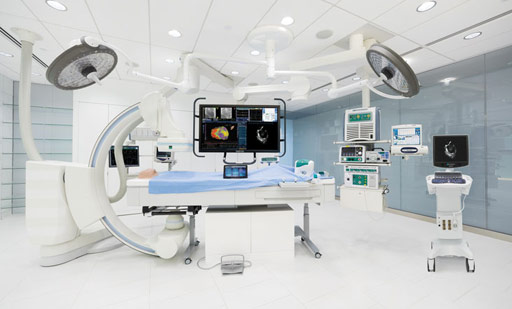Cardiac Mapping System Expands Electrophysiology Options
By MedImaging International staff writers
Posted on 11 Jan 2017
A new cardiac mapping system and sensor-enabled catheter allow for more efficient treatment of various arrhythmias.Posted on 11 Jan 2017
The St. Jude Medical (SJM; St. Paul, MN, USA) EnSite Precision cardiac mapping system offers a dual-technology platform that provides highly detailed anatomical models and maps to enable more efficient treatment of a wide range of arrhythmias, including atrial fibrillation (AF) and ventricular tachycardia (VT). The cardiac mapping system is flexible, allowing physicians to map heart chambers with any electrophysiology catheter and with minimal fluoroscopy demands, thus reducing potential for risks associated with excessive radiation exposure.

Image: The EnSite Precision cardiac mapping system (Photo courtesy of St. Jude Medical).
Based on the SJM EnSite Velocity cardiac mapping system, EnSite Precision adds the EnSite AutoMap Module, which enables the electrophysiologist to more quickly perform morphology matching that identifies the source of the irregular heartbeat, using automated cardiac rhythm mapping tools. The module includes the TurboMap feature, which helps the physician build a cardiac map 10 times faster than current systems using recorded data. The EnSite Precision cardiac mapping system has been approved by the U.S. Food and Drug Administration (FDA).
“Our new EnSite Precision cardiac mapping system was designed to give the physician a means to precisely navigate within the heart, provide higher density diagnostic data to better inform their diagnosis, and allow them to use the tools that make sense for each individual patient and situation,” said Srijoy Mahapatra, MD, vice president of clinical, medical, and scientific affairs at SJM. “The system’s intelligent automation tools enable faster, more accurate high-density maps with greater consistency across cases, which are important factors in addressing the needs of today’s electrophysiology labs.”
“The new EnSite Precision cardiac mapping system allows more mapping data to be collected in a shorter amount of time compared to today’s technologies,” said John Day, MD, of Intermountain Medical Center Heart Institute (Salt Lake City, UT, USA). “We look forward to implementing the EnSite Precision cardiac mapping system and the new SJM sensor enabled tools to help guide therapy and provide expanded procedural options to tailor care for patients in simple to complex ablation scenarios, as well as deliver a new level of accuracy and speed in our procedures.”
Cardiac arrhythmia is a group of conditions in which the heartbeat is irregular, too fast, or too slow due to a malfunctioning electrical conduction system. The arrhythmias are comprised of extra heartbeats, which include premature atrial contractions and premature ventricular contractions; supraventricular tachycardias, which include AF, atrial flutter, and paroxysmal supraventricular tachycardia; ventricular arrhythmias, which include ventricular fibrillation and VT; and bradyarrhythmias.
Related Links:
St. Jude Medical














